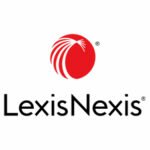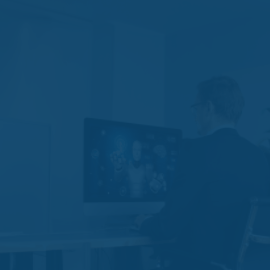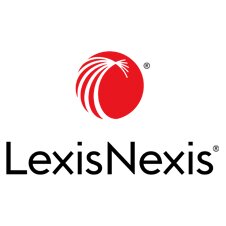Legal software – To ‘love it or ‘list it’, that is the question? Find out more with LexisNexis
Anything shiny and new inevitably loses its glimmer over time. Whether it’s a car, house, or even your legal technology, the original allure fades, and you begin to question if it still meets your needs. Nowadays, with tech innovation becoming more accessible, law firms are taking note, regularly looking for software that will further improve business efficiencies and ultimately their bottom line. But is it always the right decision to ditch the old tech for something new?
When contemplating the law firm’s thought process of opting for new legal tech, and specifically a new legal case management system, the process could easily be likened to moving house. It’s a significant decision that requires careful consideration, much like deciding whether to renovate your existing property, or up sticks to pastures new in search of the ‘perfect home’. Let’s explore this analogy to help you decide whether to ‘love’ or ‘list’ your legal case management software.
Automation, case management and the ‘moving house’ analogy
In the legal world where billable hours dictate revenue and profitability, it makes business sense to invest in technology to help streamline processes and benefit from time efficiencies where possible. A case management system powered by automation allows for the effort to be removed from routine tasks, enabling legal professionals to focus on the more critical, complex aspects of their work. Sounds great, but how do you know if your case management system is truly the right tech for your organisation?
Let’s consider why people move. Often, it’s because they’re working around limitations in their current home. They need something bigger, more modern, a better utilisation of space, and so forth. The same logic applies to software. Other legal case management providers for instance, may offer alternate functionality to your current system, but have you really considered if you are using your software to its full potential?
It’s important to minutely analyse the deployed software to weigh up the options available for both upgrading tech and replacing it, thereby making an informed decision on the best course of action.
Say, for example, you visit a property and are won over by its stunning open-plan kitchen – full of natural light and bigger than anything you could possibly envisage in your current home. However, after you move in, you realise that in fact, all the other rooms are disproportionately small because of it. Your furniture no longer fits, there’s no storage, and come to think of it, the new location means your commute to the office has increased by 30 minutes!
Similarly, when exploring new legal case management software, you might be dazzled by its design or latest features and suddenly forget what you liked about your old system. You overlook the advantages already available to you such as high user adoption, a standardised way of working, flexible integration capabilities, and robust security measures. To know the full features and functionalities of your existing tech stack, and what it is lacking, is crucial when deliberating whether a wholesale swap of technology is on the cards. It sounds obvious, but with the right information, you can make an informed decision of whether the cost-benefit vs the cost of disruption to the organisation over an extended period is worth it, as well as accurately consider the ROI your current system has been delivering, begging the question – will the new system not only continue to deliver this but surpass these proven results to warrant the pain of moving?
User adoption and training
It takes time to get to know the idiosyncrasies of a new house – which switch controls what, how does the boiler function, where is the leak in the ceiling coming from? Similarly, mastering a new legal case management system requires significant effort from numerous different parties – after all, the team are the ones who will be using the new tech the most. Therefore, it’s important to begin the journey by defining what you want to achieve through your solution and define what level of training will be needed to achieve a strong level of user adoption and comfort. If a new system is the answer, the outcome must outweigh the efforts and achieve the results needed to attest the investment.
The cost of moving
Building on the notion of investment, moving house doesn’t come cheap. It involves various costs – stamp duty, removals, conveyancing, mortgage fees, etc. It begs the question, is the money better spent reinvesting into your current home? The same applies to a software swap – maintenance costs, license fees, and retraining application developers, all adds up. Moreover, the efficiency of your practice may temporarily dip during the transition as your team gets accustomed to the new system.
In some cases, the costs involved in switching to new software may outweigh the benefits, especially if your current system is still serving your firm well. This is why it’s crucial to fully assess the ongoing costs of maintaining your existing system versus the total cost of implementing and supporting a new one.
Before making a decision, consider the hidden costs of switching legal case management software. Do you need additional licenses, hardware, or network infrastructure to support the new system? Will the firm need to adjust workflows, processes, or even hire external support for the migration? These costs, along with the disruption during the transition, can have a long-term impact on your firm’s bottom line.
Risk and data migration challenges
When purchasing a property, a major factor to consider is who you’re buying it from – are they in a chain? Is the estate agent or housebuilder reputable? The same applies to a software provider. What experience do they have in the legal tech space? Are they a small outfit or backed by a bigger organisation? Do they have the capability to efficiently onboard your business? Are your organisational values aligned to ensure you achieve your tech vision? Will the solution grow with your business? Will your data be safe? Are their data migration processes proven, streamlined and risk-free?
Going back to our analogy, if data migration is not executed meticulously, your data is at risk of being left in the old legal case management system, much like leaving belongings behind when moving house. This can lead to security and privacy risks, in addition to business disruption, delayed migration, frustration amongst staff, and crucially, poor user adoption, potentially negating the whole objective of the system swap.
Maintenance and support
Neglect leads to disrepair, be that a house or software. Whether SaaS or on-premises, software requires maintenance which in turn needs technical expertise. Where SaaS handles infrastructure upgrades automatically, on-premises systems have a more traditional IT infrastructure, routinely requiring manual security patches and upgrades either undertaken in-house or through the software provider. When considering switching case management systems, one of the questions to ask is, are you confident that the new software provider will provide the level of support you need, regardless of whether the solution is SaaS or on-premises? Further to this, in the grand scheme of things, will the change benefit your business in the long term? Using the house analogy, it can be likened to making a house move because the toll of renovating the 10+ year old kitchen and bathroom seems overwhelming. A valid, but necessary point for consideration.
The unknowns
When deciding to ‘love’ or ‘list’ your existing legal case management system, there will always be unknowns that you may not be able to identify or accurately factor into your decision-making. However, if you have been realistic about what you want to achieve; you’ve researched the marketplace and delved into the capabilities of your current legal case management system, then your educated decision on whether to ‘love’ or ‘list’ is as good as any. Ultimately, when you buy a new house, it might look perfect on paper, but you don’t know what it’s really like until you move in – the same can be said for how to accurately make the most out of your software solution. You only get a true sense of the fit for the business once you are using it. As they say, the grass isn’t always greener on the other side!
So, before you swap your existing system for new, it is advisable to thoroughly assess if you are using your current case management software to its fullest potential.
Here are some useful points to consider:
- Hidden costs: Just as moving house can reveal hidden costs like unexpected repairs or renovations, upgrading software can uncover additional expenses. For example, you might need to purchase new hardware, or additional licenses, or invest in extensive training for your team.
- Customisation: When you move into a new house, you might want to tailor it to fit your needs, like painting walls or installing new fixtures. Similarly, new software often requires customisation to align with your firm’s specific workflows and processes. This can be time-consuming and costly if not fully scoped out, and in some situations, impossible. There may be a covenant prohibiting it, or in software terms, the system may not be capable of the level of customisation you need.
- Community and support: In a new neighbourhood, it takes time to build relationships and find local services you trust. With new software, you need to establish a support network, whether through the vendor’s customer service, online forums, or user groups. This support is crucial for troubleshooting and maximising the software’s potential.
- Scalability: Just as you might move to a bigger house to accommodate a growing family, your software needs to scale with your business. Ensure that the new system can handle increased caseloads and additional users without compromising performance.
- Legacy systems: Moving house often involves deciding what to keep and what to discard. Similarly, when upgrading software, you need to determine which legacy systems and data are worth migrating. This process can be complex and requires careful planning to avoid data loss or compatibility issues.
- Integration: Just as you need to ensure your new house has compatible utilities and services, your new software must integrate seamlessly with existing tools and platforms. This ensures a smooth workflow and prevents disruptions in your legal practice.
Intro para: Whether upgrading or replacing your legal case management software, it is a significant decision – much like moving house. It’s essential to weigh the pros and cons, consider the costs, and understand the risks involved. Regardless of whether you decide to love it (stick with your current system) or list it (move to a new one), make sure it’s the right choice for your firm’s needs.




